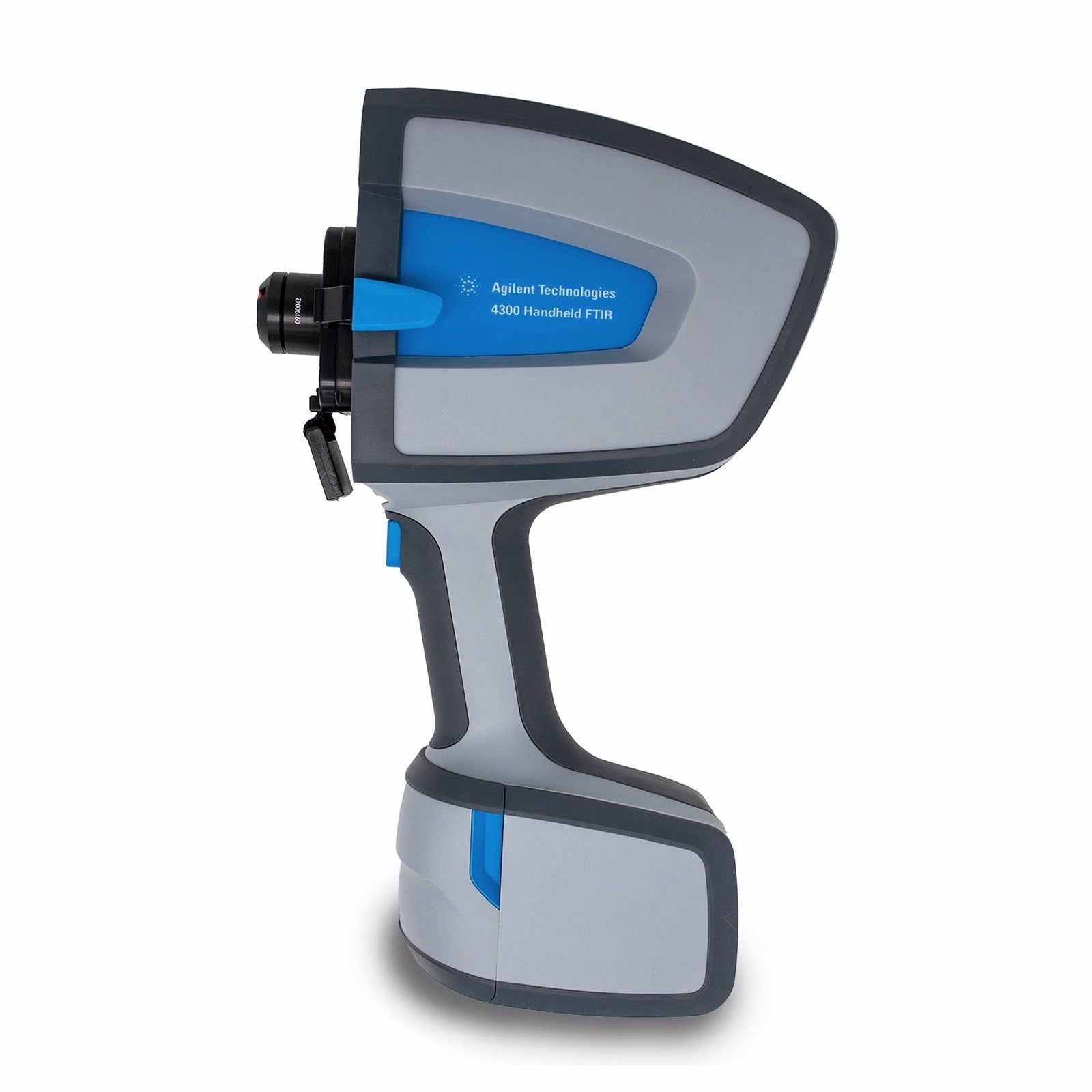Agilent 4300 Handheld FTIR Spectrometer
Original price was: $35,999.00.$21,599.40Current price is: $21,599.40.-40% OFF
Explore the Agilent 4300 Handheld FTIR – a portable, cutting-edge spectrometer designed for rapid, non-destructive on-site analysis. Unleash the power of real-time results across a variety of applications from quality control to field research.
In stock
Description
Agilent 4300 Handheld FTIR! This is a handheld Fourier Transform Infrared (FTIR) spectrometer. FTIR spectroscopy is a widely used analytical technique that provides information about the chemical composition and molecular structure of materials. The Agilent 4300 is designed for portable, on-site analysis.
In recent decades, the preservation and understanding of historical artifacts have been greatly enhanced through advancements in analytical technology. One such advancement is the development of portable Fourier Transform Infrared (FTIR) spectrometers, specifically the Agilent 4300 Handheld FTIR.
In this study, we employed the Agilent 4300 Handheld FTIR for the non-destructive analysis of ancient pigments found in pottery shards from an archaeological site in the Mediterranean. By using the handheld device, we were able to perform immediate on-site analyses, reducing the potential degradation risks associated with transporting artifacts.
Some of the notable features and advantages of the Agilent 4300 Handheld FTIR include:
- Portability: As a handheld device, it can be taken directly to the sample location, whether it’s in the field, on the factory floor, or in a lab. This eliminates the need to bring samples back to a central lab, which can save time and reduce sample degradation or contamination.
- Non-destructive Analysis: FTIR spectroscopy is a non-destructive technique, which means that samples can be analyzed without being altered or consumed. This is especially useful for valuable or limited samples.
- Versatility: The Agilent 4300 can analyze a wide range of materials, from organic compounds to polymers to inorganic materials.
- Rapid Results: FTIR analysis can be completed in seconds to minutes, providing real-time feedback.
- Ease of Use: The device is typically designed with intuitive user interfaces, allowing for simple operation even by non-specialists after some basic training.
- Built-in Libraries: Many handheld FTIR devices come with built-in spectral libraries, allowing for the rapid identification of thousands of compounds based on their unique infrared spectra.
- Durable Design: Given that it’s meant for on-the-go analysis, handheld FTIR devices like the Agilent 4300 are generally built to withstand tough conditions, from industrial settings to rugged field environments.
Applications for the Agilent 4300 Handheld FTIR might include quality control checks in manufacturing, analysis of art and historical objects, environmental monitoring, and more.
Our findings, based on the unique infrared spectra captured, identified the presence of several pigments, notably cinnabar and malachite, which provides insight into the trading and artistic practices of the region during the Bronze Age. The success of this study underscores the immense potential of the Agilent 4300 Handheld FTIR as an indispensable tool in the realm of cultural heritage preservation and archaeological research.
APPLICATIONS
Aerospace, automotive, paints, and coatings:
- Composites: assess thermal, chemical, and environmental damage; test for curing; verify
composition; and analyse surface plasma treatment - Polymers: verify composition and authenticity; detect contaminants; and test for curing
- Rubber and elastomers: measure the composition of carbon-filled materials, such as tyres
- Coatings: confirm composition, thickness and uniformity; measure degradation; and ensure proper
surface preparation
Metals:
- Ensure that surfaces are prepared for coating
- Measure surface contamination
- Monitor surface cleaning processes
Energy and Chemicals:
- Identify engineering components (such as gaskets, seals and O-rings) by composition
- Monitor UV degradation of polymers used in solar panel arrays
- Identify and qualify films and coatings for critical applications in oil and gas exploration and handling
- Measure thermal damage and coating wear on composite wind turbine blades
Mining and geology:
- Measure soil composition
- Analyse rocks, minerals and ores
Art and historical object conservation:
- Confirm authenticity
- Analyse paints, pigments, fillers, and lacquers
- Determine paper and textile composition
Food and agriculture:
- Measure soil composition and chemistry
- Analyse fruit and vegetable ripeness

Reviews
There are no reviews yet.